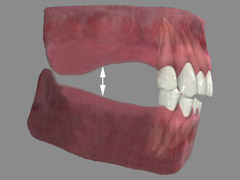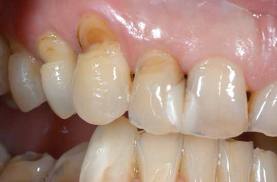
In the last blog, we discussed dental attrition … it may be helpful to review it.
If one has severe attrition and has lost a significant amount of the vertical dimension of their teeth, then it is wise to think of ‘building’ them up to their original height (before the attrition).
We can accomplish this by placing full coverage restorations on the teeth. These are known as crowns. Please read blog A Dental Cap? A Dental Crown? Either Way, It’s All Good posted on August 2, 2012.
Crowns are restorations that will cover and protect existing tooth structure…You can look at them as an ‘investment’ for your teeth. For this reason, we want to make sure that the attrition is dealt with. Otherwise the crowns can be at risk of failing. Crowns are made up of very strong materials, but the deleterious forces which cause attrition, can still take their toll on them. We want to protect our investment.
This is why it is necessary to treat the problem I.e., the attrition. This can be accomplished by:
1. Dealing with any emotional issues that may lead to stress and anxiety which may be the cause of the bruxing and grinding.
2. Wearing a night guard. This will prevent future wear and also make sure that existing restorations (that were done to repair the attrition I.e., crowns), do not break down.
3. Orthodontics / Spot grinding. Mal-aligned teeth do not usually occlude together properly. This often results in certain teeth prematurely contacting each other. This may result in advanced wear on the affected teeth.
Actual Bite Collapse
As the wear of the dentition becomes more severe, the effects that are seen go beyond that of worn teeth. The result is a vertical loss of occlusion called a ‘bite collapse.’
The above image is an extreme example of this. This individual has no teeth in the back of their mouth. There is no support, so the upper and lower jaws collapse upon one another; the jaws rotate forward more than they normally would.
Furthermore, the front teeth are not able to support all of the pressure that is placed on them and they usually end up fanning or splaying outwards.
In my dental practice, I have seen many individuals who present with varying degrees of bite collapse. After explaining what has happened to their teeth and jaws, it becomes apparent to them as to why they experience some of the pain and symptoms associated with a bite collapse.
In the next blog we will look at the repercussions of a bite collapse and the different ways to treat it.
I hope it will bring some clarity and understanding to those of you who suffer from this problem.
Till then,
Dr. F. Keshavarz Dentistry, Brampton’s Gentle Dentist






